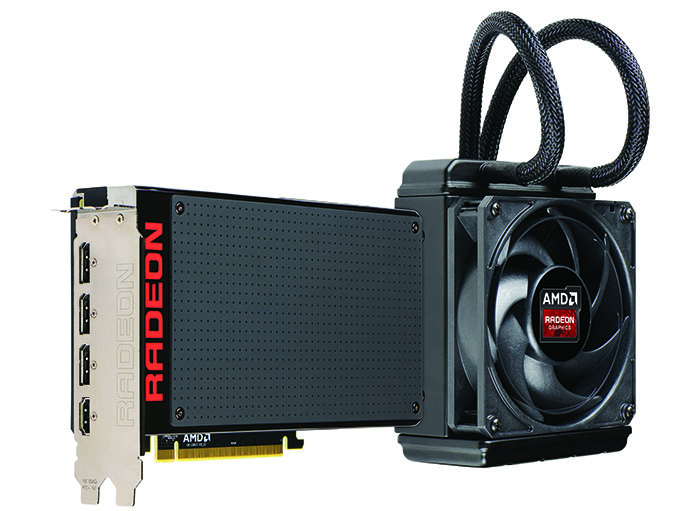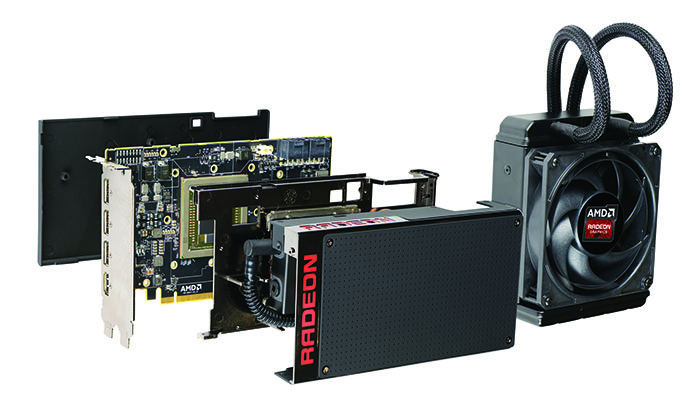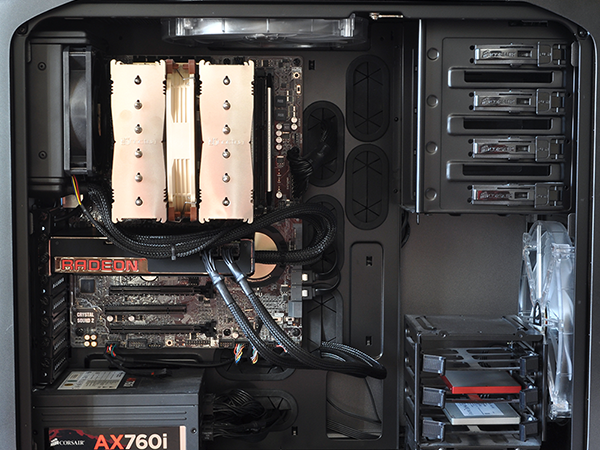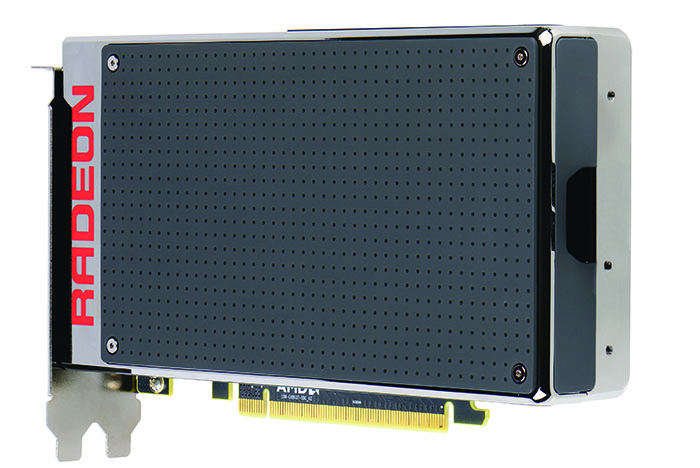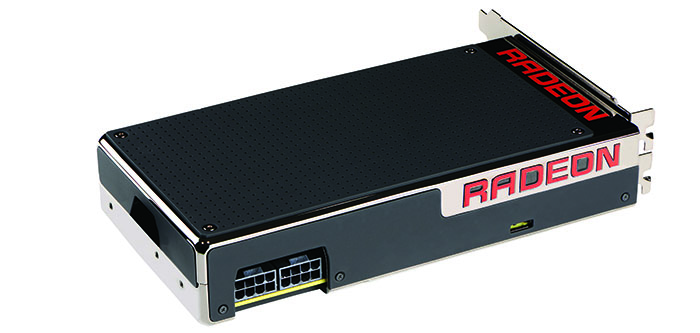The Card
Playing on the space-saving aspect made possible by the use of HBM memory in particular - the core, interposer and memory measure a scant 1,011mm² combined - the Fury X is a wee card that measures just 7.5in long and takes up a familiar dual-slot form factor. The card can be made even smaller, as evidenced by the R9 Nano that will ship on a 6in PCB.
A look at the rear brings something new. AMD eschews the older digital connections such as DVI and opts for a trio of DisplayPort 1.2a and HDMI 1.4a. The latter is surprising as while it can run a lusty 4K resolution at 30Hz, the newer v2.0 of the standard offers 60Hz. This is important because the small size and supposed quietness of the card lends itself to tiny, powerful PCs in the living room. 4K TVs tend to run HDMI 2.0, meaning, unlike Nvidia, users will struggle to run at the panel's refresh rate on a Radeon. On a better note, the UVD block is of the latest generation, enabling acceleration of H.265-encoded content.
Snaking away from the card via two 400mm-long tubes is the custom-built radiator unit. It's a thick beastie that has an extra 'helmet' on top to increase the total available area, and it's from this upper section that the tubes travel towards the GPU. Up front is a derivative of Scythe's Gentle Typhoon 120mm fan that's designed for high static pressure and quietness.
Looking inside shows how AMD mates the card and cooling. The closed-loop liquid solution is good for wicking away up to 500W of heat, according to AMD, and it covers the GPU, HBM memory and VRMs in one fell swoop. More precisely, the cooling is made for AMD by Cooler Master, with the all-in-one pump in direct contact with a copper plate that covers the GPU and HBM memory. The tubing extends to a copper pipe and heatsink that covers the VRM components.
AMD reckons the whisper-quiet cooler is capable enough to keep the GPU at around 50°C during regular gaming. Such intricacy of design also means that add-in board partners will not be allowed to produce Fury X cards of their own - much like Nvidia's Titan X, partners will resort to adding a sticker and, perhaps, a modicum of overclocking to differentiate their product from the competition.
As is the norm with modern AMD cards, there's a small BIOS switch on top that offers a second position for the enthusiast. The card ships with identical BIOSes from the get-go, so it's up to the consumer to take a risk by putting on a performance-enhancing version, should they so wish, in the second position.
AMD showcased the Fury X in a number of tiny chassis during an event in Munich, Germany, last week, but the thickness of the radiator coupled with the way the tubes jut out from one side means it isn't the easiest to install if you, like us, have a large CPU heatsink in your system. We had to persuade the tubing to kink around the massive Noctua heatsink that had to be removed before installing the Radeon's cooling.
The card itself is dressed in a smart look, with black nickel aluminium contrasting well with the soft-touch finish on the front. Interestingly, AMD is going to release 3D CAM models of the faceplate on an upcoming blog, enabling the maker community to design and print their own. Build quality and the overall aesthetic are a notch or two above the R9 290X's. Though we personally prefer the sleek lines of the Nvidia cooler used on many of its high-end GPUs, the Fury X's is decent.
A side-on shot reinforces just how small the Fury X is, though the twin 8-pin power connectors, ostensibly for headroom when overclocking, tell a different story. This is a performance GPU first and foremost.
There are nine status LEDs just above the two 8-pin power connectors, and their purpose is to show GPU load at any one time. They can be turned off, changed from the default red to either purely blue or a mixture of blue and red by toggling a couple of switches on the back of the card. An extra LED, on the far left, glows green if the GPU is in long idle (ZeroCore) power mode.






